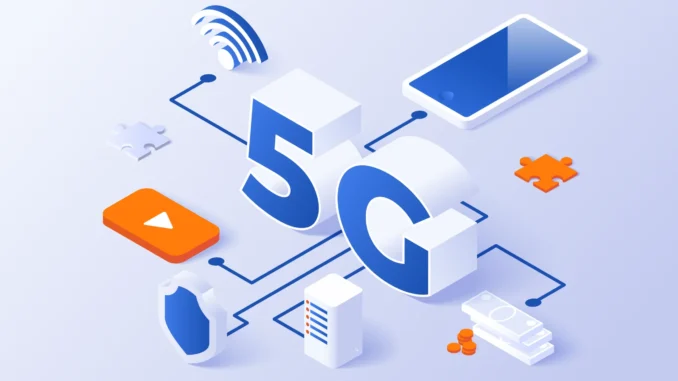
The fifth generation of wireless technology, 5G, has transformed the way we communicate, work, and live. Released in 2019, 5G has brought about unprecedented speeds, low latency, and massive connectivity, redefining the possibilities of mobile networking.
Revolutionary Features of 5G – Speed: 5G offers download speeds up to 20 Gbps, making it faster than ever before. This enables seamless streaming, online gaming, and cloud computing.






Low Latency: 5G reduces latency to as little as 1 ms, enabling real-time communication, remote surgery, and autonomous vehicles.
Massive Connectivity: 5G supports up to 1 million devices per square kilometer, making it ideal for IoT applications, smart cities, and industrial automation.
Ultra-Reliable: 5G provides ultra-reliable connections, ensuring that critical applications, such as remote healthcare and mission-critical communications, function flawlessly.
Transformative Impact of 5G:
Smart Cities: 5G enables the creation of smart cities, with intelligent transportation systems, energy-efficient buildings, and improved public safety.
IoT: 5G facilitates the widespread adoption of IoT devices, enabling real-time monitoring, automation, and predictive maintenance.
Remote Healthcare: 5G-powered remote healthcare applications improve access to healthcare services, enable remote surgeries, and enhance patient outcomes.
Autonomous Vehicles: 5G supports the development of autonomous vehicles, enabling real-time data exchange and ensuring safe, efficient transportation.
Enhanced Mobile Broadband: 5G offers improved mobile broadband experiences, including faster data speeds, lower latency, and greater connectivity.
Key Players and Applications:
Network Providers: Companies like Verizon, AT&T, T-Mobile, and Vodafone have launched 5G networks in various parts of the world.
Device Manufacturers: Apple, Samsung, and Huawei have released 5G-enabled smartphones, while companies like Ericsson and Nokia supply 5G infrastructure equipment.
Industrial Applications: Manufacturers like Airbus and Boeing are using 5G for aircraft communication and remote monitoring.
Healthcare: Hospitals and healthcare providers are leveraging 5G for remote consultations, telemedicine, and medical research.
Challenges and Future Developments:
Spectrum Allocation: The availability and allocation of spectrum resources remain a key challenge for 5G deployment.
Infrastructure Development: Building out 5G infrastructure, including cell towers and small cells, is a significant investment.
Security: Ensuring the security of 5G networks and protecting against cyber threats remains a top priority.
As the 5G ecosystem continues to evolve, we can expect to see:
Advancements in Edge Computing: Edge computing will enable real-time processing and analysis of data, further increasing the efficiency of 5G applications.
Increased Adoption: 5G will become more widespread, with greater coverage and availability of services.
New Use Cases: As 5G infrastructure and capabilities continue to mature, new use cases and applications will emerge, transforming industries and societies.
In conclusion, 5G is a revolutionary leap in mobile networking, offering unprecedented speeds, low latency, and massive connectivity. Its transformative impact will be felt across industries and societies, enabling new use cases, applications, and services that were previously unimaginable.


Leave a Reply